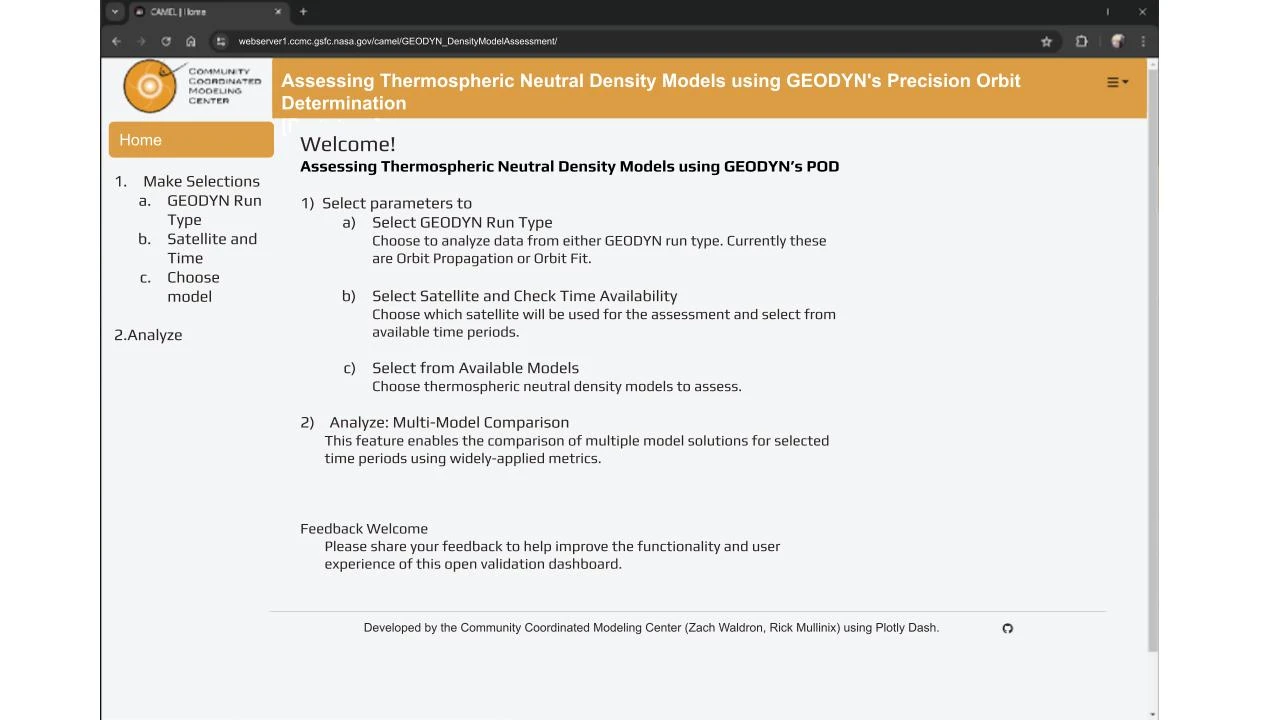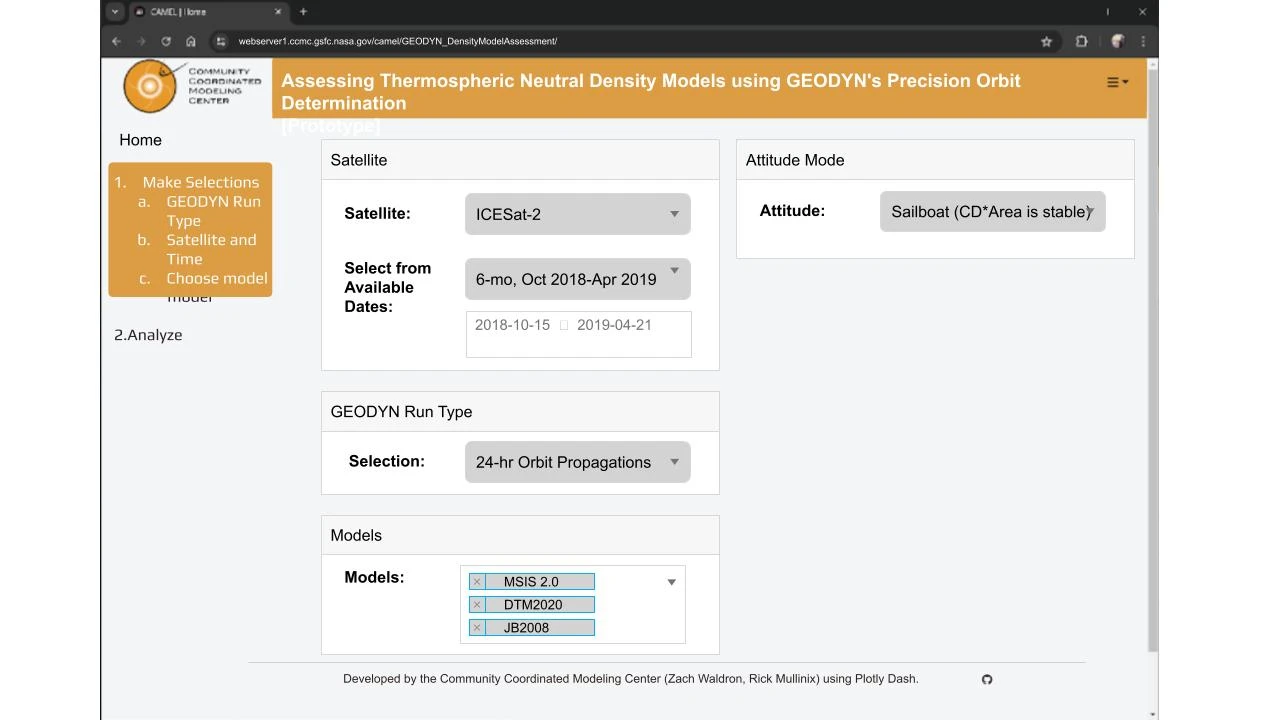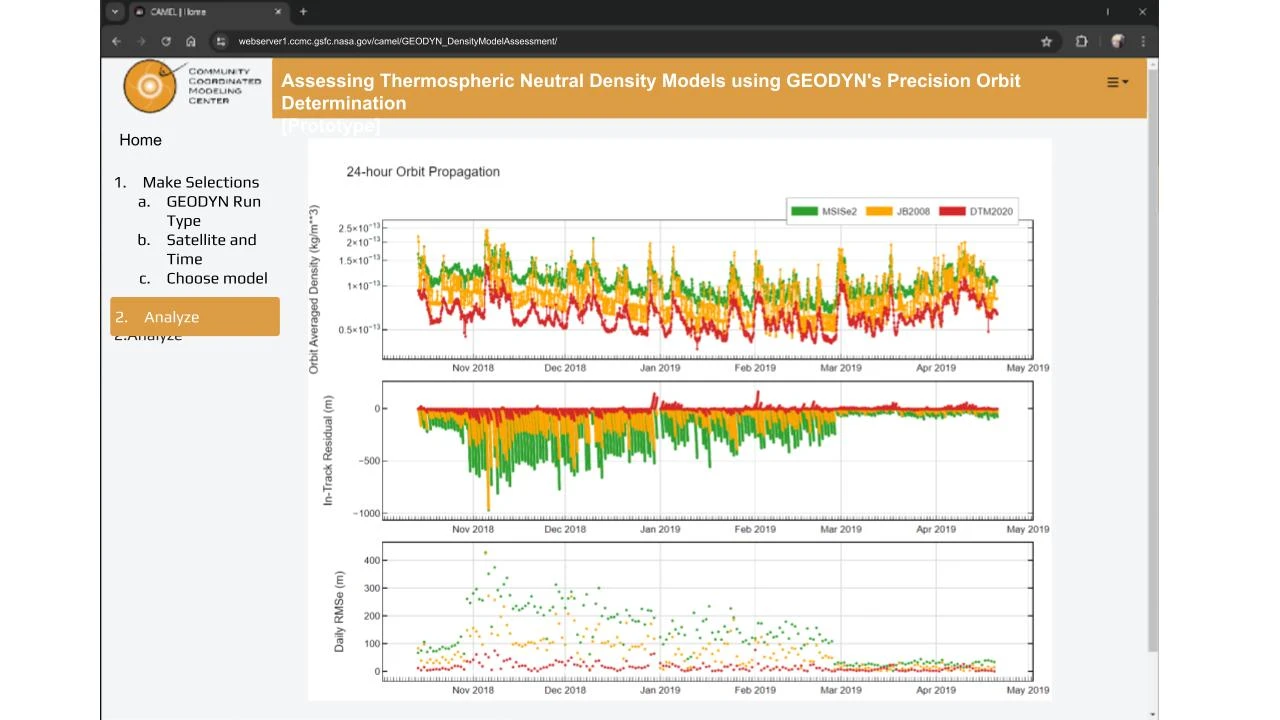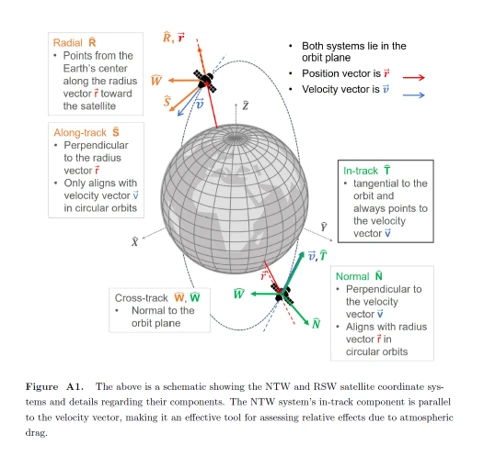Assessing Thermospheric Neutral Density Models using GEODYN's Precision Orbit Determination
About
ISWAT Team ID: G2A-04
Team Leads:
- Katherine Garcia-Sage (NASA/GSFC/CCMC, USA)
- Zachary Waldron (University of Colorado / SWx TREC, USA)
Communications: See the ISWAT G2A-04 team page for an up-to-date list of participants and latest news about the working team.
Validation Campaign in the CCMC CAMEL Framework
Mock-up of the Study



Methodology
This study focuses on utilizing the increasing availability of satellite trajectory data from global navigation satellite system-enabled low-Earth orbiting satellites and their precision orbit determination (POD) solutions to expand and refine thermospheric model validation capabilities. The research introduces an updated interface for the GEODYN-II POD software, leveraging high-precision space geodetic POD to investigate satellite drag and assess density models. This study examines three models (NRLMSIS2.0, DTM2020, JB2008) using precise science orbit (PSO) solutions of the Ice, Cloud, and Land Elevation Satellite-2 (ICESat-2).
Each density model is used to construct orbit propagations under the following conditions:
- The orbit propagations have a nominal arc-length of 24-hours, centered on noon of each day. For days that have data gaps (gaps may be due to maneuvers, solar panel actuation, etc.) the arc length is set to match the PSO runs.
- The initial conditions for each 24-hour propagation are set to match the state vector of the PSO and is the same across each density model.
- The drag coefficient (CD) is physically calculated within the orbit propagation force model. The Diffuse Reflection with Incomplete Accommodation (DRIA) (Walker et al. 2014) model is used with the following parameters: . MS = 26.980D0 # molar mass for each panel (g/mol) . TW = 300.0D0 # temperature of panels (K) . ALPHA = 0.890D0 # accommodation coefficient . KL = 0.0D0 # langmuir parameter . FRACOX = 1.0D0 # fraction of surface covered by atomic oxygen
The PSO serves as observation against which each model’s propagation is compared. This enables an evaluation according to each model’s ability to redetermine the orbit. To best observe satellite drag effects, all output orbits are transformed from the J2000, geocentric inertial reference system to the NTW, orbit-aligned satellite coordinate system (See Figure below). The relative in-track position deviations, quantified by in-track residuals, are treated as proxies for model densities that differ from an unknown true density.
Please note that while many of the background details behind the methodology are explained in the following paper, the specific methodology described therein differs from what is provided here. That paper focuses on using orbit fits and scaling factors, while these results use orbit propagations. The big picture idea is the same—use PSO as truth and conduct subsequent orbit runs (either as propagations or fits) for each density model to gauge how much each model’s drag environment changes the position of the satellite. For each run type the relative in-track positional change is treated as a proxy for modeled densities that differ from an unknown true density. The orbit propagation scheme is not able to reconcile any information regarding the model error relative the the “unkown-true” density, whereas the orbit fitting scheme can to some degree.

Related References and Publications
- Zachary C. Waldron, Katherine Garcia-Sage, Jeffrey P. Thayer, et al. Assessing Thermospheric Neutral Density Models using GEODYN's Precision Orbit Determination. ESS Open Archive . June 25, 2023. https://doi.org/10.22541/essoar.168771431.17897912/v1